A long drawn gender injustice has been plaguing Indian society from within and outside the family. The existing patriarchal setup has given rise to unequal power relations, consistently pushing women to a subordinate position. Those women, who were daring enough to raise questions, were meant to be snuffed.
In the traditional Indian society, women were restricted to the field or the household and did not participate in public employment. Ever since women started making their presence felt in the public domain, incidences of sexual harassment at the workplace have occurred.
Over 520 cases of sexual harassment of women at workplace were reported during 2014, of which, 57 cases were reported in office premises and 469 registered at other places related to work, the Women and Child Development Ministry informed Parliament during the recently-concluded monsoon session.
The first time that an incident of sexual harassment at the workplace was reported, was in the 1980s.
It was in Mumbai, where a forum dealing with questions on oppression of women at theworkplace, brought to public attention the sexual harassment that was being faced by women- nurses, air hostesses, Phd scholars, and the likes. These issues were later taken up by trade unions.There was seen a trend of trivializing of cases of sexual harassment. Baailancho Saad (‘Women’s voice), an NGO in Goa, brought to the forefront the sexual harassment of a secretary by the then Chief Minister.The 1990s saw cases like Bhanwari Devi , Vishaka , Rupan Deol Bajaj , which helped pave the way for the Vishaka Guidelines and the eventual enactment of the 2013 Legislation.

The need to establish and restore a comfortable, non-violent, safe workplace for every individual was recognized, and the year 2013 saw the legislation of The Sexual Harassment of Women at Workplace (Prevention, Prohibition and Redressal) Act.
Sexual harassment at the workplace is considered to be a violation of a woman’s right to equality, life and liberty. It creates an insecure and hostile work environment, which discourages women’s participation in work, thereby adversely affecting their social and economic empowerment and the goal of inclusive growth.
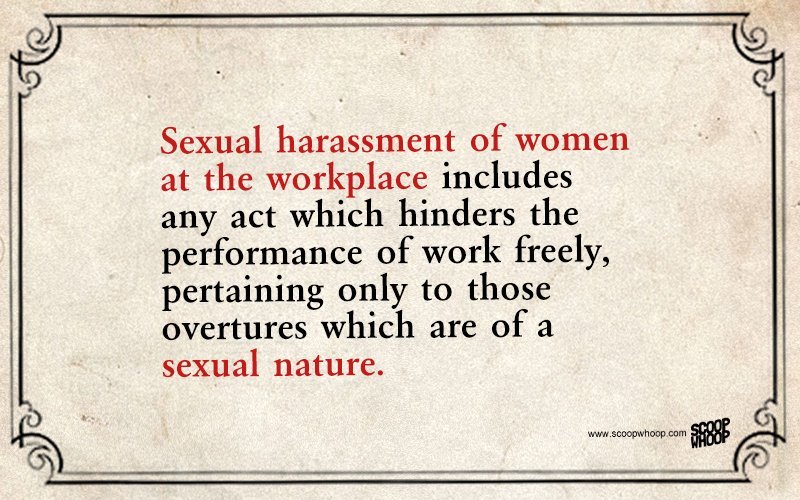
There could be other forms of discrimination but these don’t come under the ambit of sexual harassment as given under the Act. In order for sexual harassment to arise, the act or harassment has to be sexual in nature, it has to be in the course of employment, and there has to be a reasonable fear or apprehension of harassment.
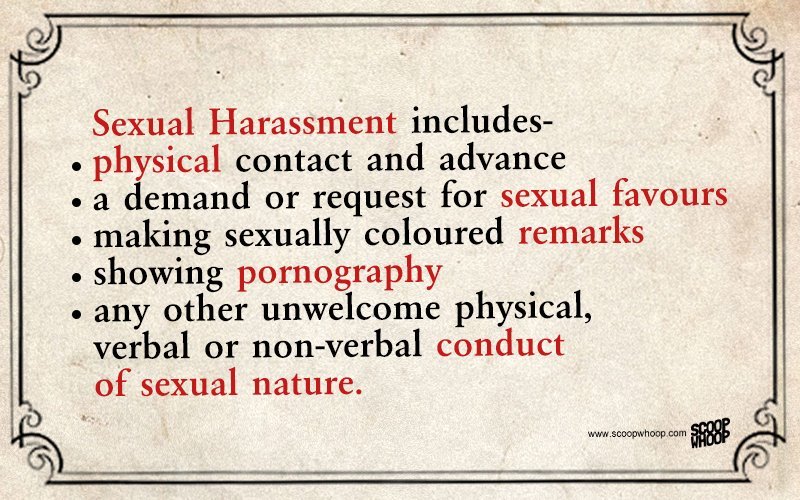

Hospitals, institutions, and any place visited by the employee arising out of or during the course of employment, including transportation provided by the employer for undertaking such journey. A dwelling place or house could also be deemed to be a workplace.

Section 3 of the Act lays down the circumstances which would amount to sexual harassment at the workplace. These include, implied or explicit promise of preferential treatment, threat of detrimental treatment, threat about her present or future employment status, interference with her work or creating an intimidating or offensive or hostile work environment for her.
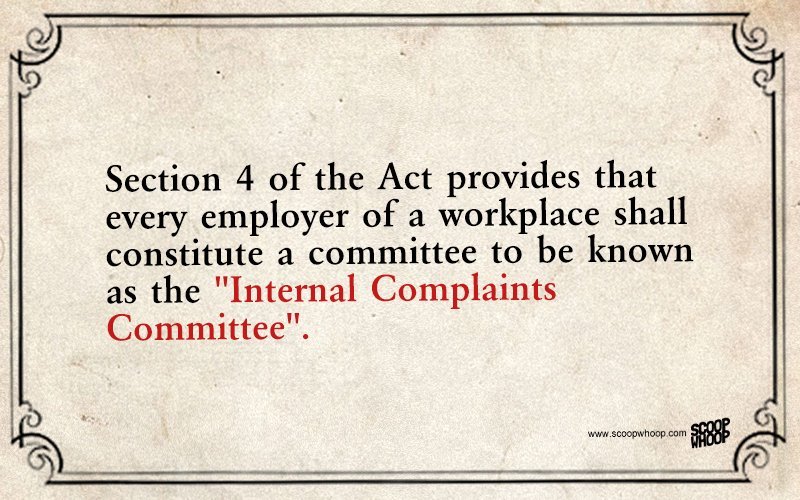
The legislation provided that it was the obligation of the employer to prevent, protect and provide measures to end sexual harassment. At least half of the members of such committee have to be women. The Presiding officer has to be a woman employed at a senior level, and at least two members will have to be from amongst employees committed to the cause of women.
6.

The Local Complaints Committees are to receive complaints of sexual harassment from establishments where the Internal Complaints Committee has not been constituted due to having less than ten workers or if the complaint is against the employer himself.
7.
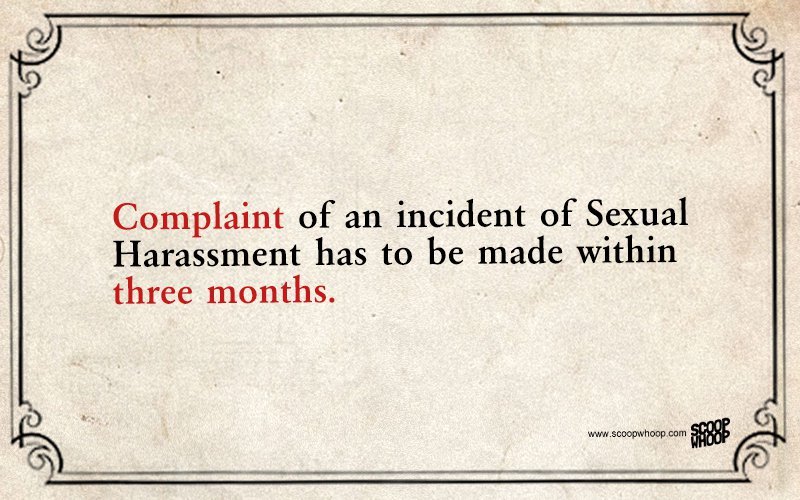
An aggrieved woman may make, in writing, a complaint of sexual harassment at workplace to the Internal Committee, or the Local Committee, within a period of three months from the date of the incident.
8.
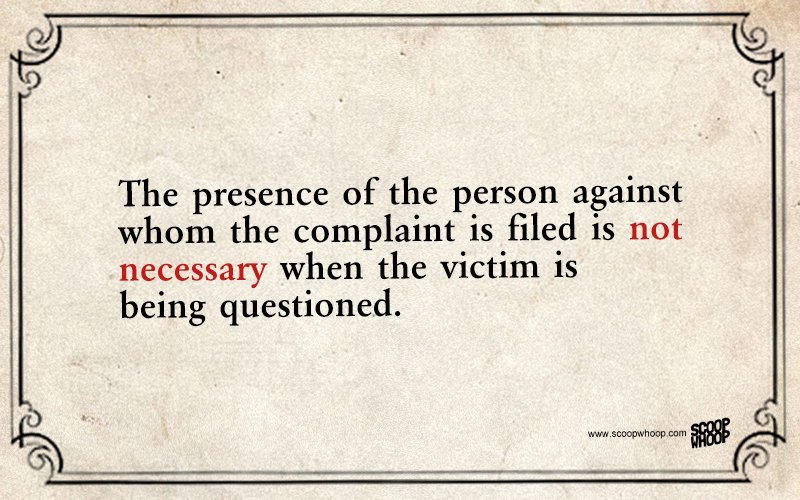
Such presence could amount to further harassment, and is therefore to be avoided.
9.
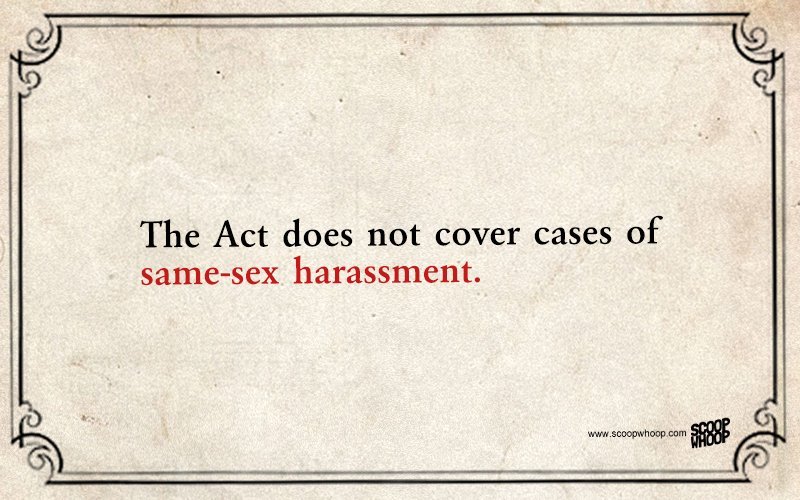
The Act is gender specific. The aggrieved person, by definition, is required to be a woman, and the perpetrator, a man.
10.
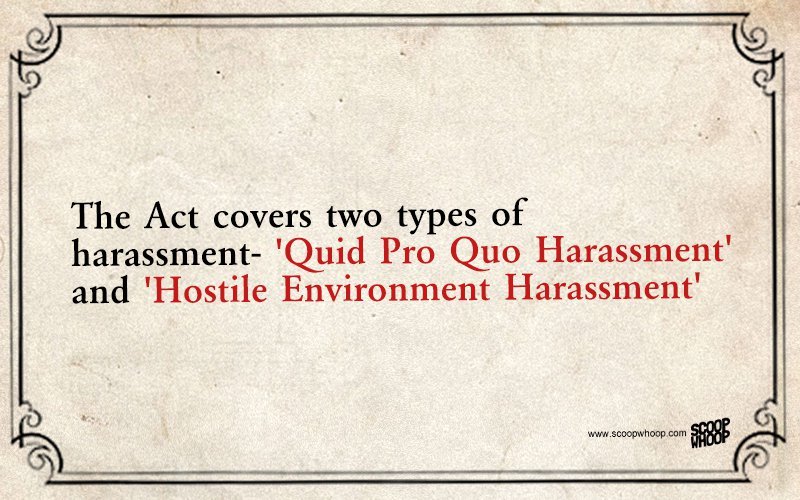
Quid Pro Quo Harassment arises where the woman is threatened with dire consequences if she does not succumb to inappropriate advances. Hostile environment harassment where the victim is subject to an unfriendly atmosphere and the other employees are also affected by such a tense environment. It includes taunting and other physical and psychological effects.
11.

12.
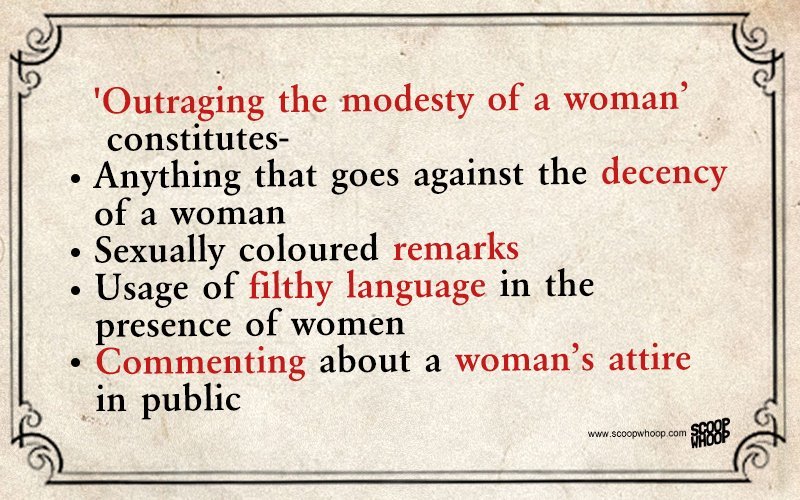
In the landmark case of Rupan Deol Bajaj v KPS Gill , outraging the modesty of a woman was deemed to amount to sexual harassment and the same was defined and laid down in law.
13.
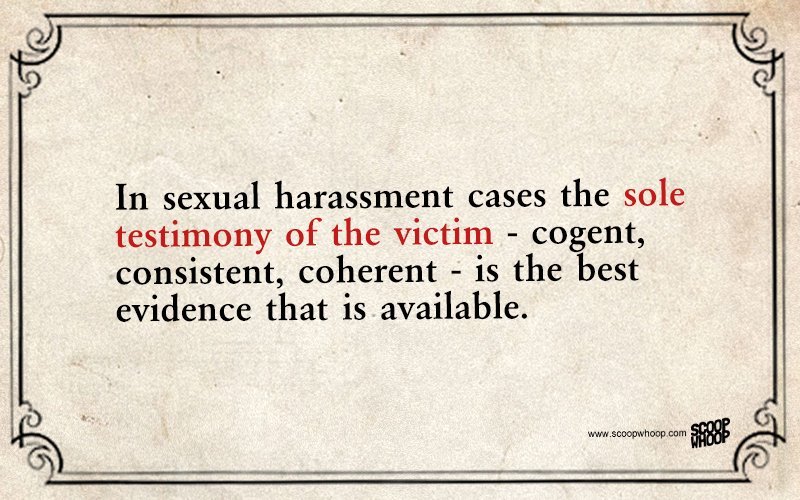
14.

15.

The tangible consequences of reporting sexual harassment cases include getting fired, not being given promotions, being assigned less responsibilities, etc.
The motives for such acts include inflicting economic harm to the woman and breaking her confidence, causing her material loss of benefits and creating obstacles for her.
Despite there being a plethora of laws in place aimed at securing the rights of women in the nation, there’s no denying the fact that each of them is plagued by misuse. With reference to cases of sexual harassment at workplace in particular, misuse is often alleged.
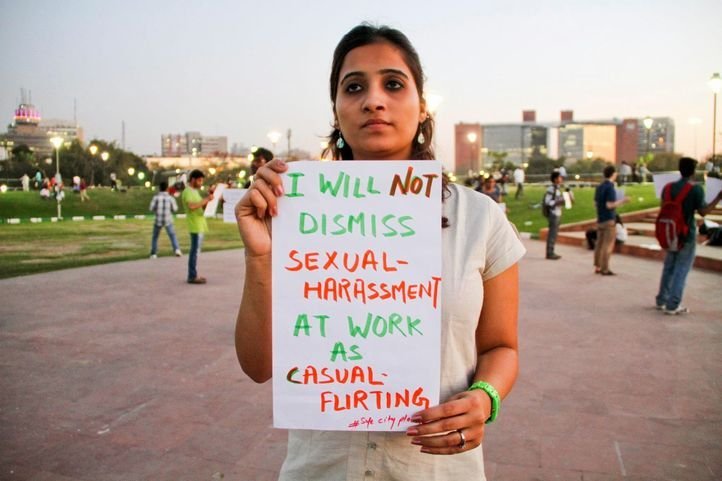
In certain cases, when a woman gives into a favour, acquires benefit and then complains of being harassed, chances are that it is deemed to be a false complaint.
In these circumstances, it is necessary that the subjective element is taken into account. For instance, it often so happens that a victim is harassed at the workplace and is threatened with having to lose her job on her refusal to concede. In such cases, even if she adopts an ambivalent attitude, she might still have felt harassed.
Although it seemed to be consensual, the acts of sexual favours were actually committed under coercion.
In such cases, ‘consent’ should take a backseat. The whole edifice falls through it is said that everything was done under consent. It is extremely pertinent that subjective experiences are taken into account. The unique circumstances of each case are to be considered and appropriate punishment is to be meted out.

















